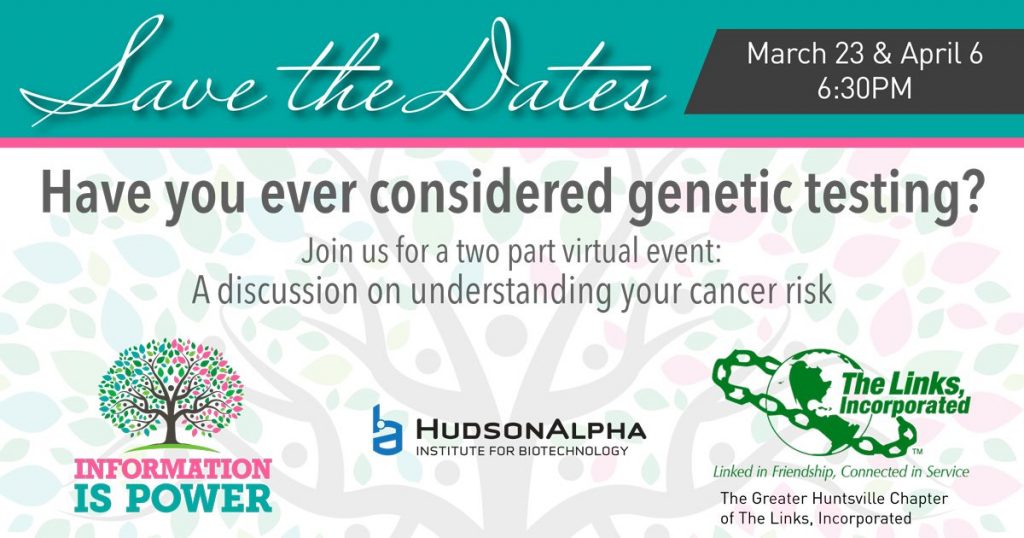By: Sarah Sharman, PhD, Science Writer
HudsonAlpha bioethicist discusses the role of race in vaccine allocation in a new opinion piece.
It has been over a year since the first person in the United States tested positive for the novel coronavirus that originated in the Wuhan province of China. When the state of emergency was declared last March, the US had not seen much destruction and death as a result of the virus, now known as SARS-Cov-2. However, one year later, the US has seen upwards of 525 thousand deaths and 29 million confirmed cases of COVID-19, the respiratory illness caused by the SARS-CoV-2 virus.
Vaccines: the road to ending the COVID-19 pandemic
It has become increasingly apparent over the past year that COVID-19 disproportionately affects racial and ethnic minority groups and communities. Both Black and Latinx populations have higher hospitalization rates and higher death rates than white populations. The increased risk in these communities is unlikely to be due to race itself, but rather the social and economic disadvantages that have resulted from systemic racism. For example, members of racial and ethnic minority groups often hold more high-risk jobs in the essential industries than white populations.
Even though they are at a higher risk of severe disease, due to a combination of historically rooted mistrust of the medical system, vaccine hesitancy and often, a lack of access, many Black and Latinx Americans are being vaccinated at rates concerningly lower than white Americans. If the goal of vaccination programs is to save the most lives, should Black and Latinx populations be prioritized under the current vaccine allocation guidelines?
Early efforts to slow the spread of the virus included social distancing, stay-at-home orders, mandatory face masks, and contact tracing. However, the ultimate goal to reduce the transmission of SARS-CoV-2 is the development and distribution of vaccines. As of March 2021, there are three COVID-19 vaccines approved by the FDA.
Although the development and FDA approval of the vaccines was an important milestone, manufacturing enough vaccines to administer to all Americans is another feat in itself and will take time. Due to the limited number of vaccines, policy makers are being forced to decide who to prioritize for the limited number of vaccines in the early days of vaccine manufacturing, and what populations to add to the priority list as more vaccines become available.
HudsonAlpha bioethicist’s proposed strategy for equitable vaccine allocation
Bioethicist Thomas May, PhD, a research faculty investigator at the HudsonAlpha Institute for Biotechnology and the Floyd and Judy Rogers Endowed Professor at Washington State University Elson S. Floyd College of Medicine, recently published an opinion article in The American Journal of Bioethics discussing the role of race in pandemic vaccine allocation, including his thoughts on the current framework for vaccine allocation.
In October 2020, the National Academies of Sciences, Engineering and Medicine (NASEM), in collaboration with the Centers for Disease Control (CDC) and National Institutes of Health (NIH), released a framework for vaccine distribution to help policy makers plan for equitable allocation of the COVID-19 vaccine. The proposed vaccination strategy prioritizes people based upon their risk of being hospitalized or dying from COVID-19.
High-risk health care workers and first responders were among the first group eligible to receive the SARS-CoV-2 vaccine last winter. Other high-risk groups that have been prioritized thus far include the elderly, as well as those that fall into the high-risk category, meaning they have conditions that put them at a high risk for hospitalization and death due to COVID-19 symptoms. In their proposed strategy, the NASEM also acknowledged that race should be included as a criterion when determining COVID-19 vaccine prioritization.
“I think that it is important that the NASEM framework incorporated race as an important allocation criterion for the COVID-19 vaccine,” says May. “However, in trying to meet their declared goal to ‘reduce severe morbidity and mortality and negative social impact due to the transmission of SARS-CoV-2’ they still focus largely on mitigating individual disease, rather than reducing the overall spread of the virus.”
May suggests that rather than focusing on which individuals are the most vulnerable to severe cases, we should focus on which allocation strategies would be most effective at reducing the spread of disease within communities. This approach would focus on vaccinating those individuals and populations who are most likely to widely spread the disease to others, rather than those at a high risk of dying from the disease.
“This approach is not a new one,” says May of his proposed strategy. “Vaccine allocation is one of the most challenging aspects of pandemic response, but this is not the first pandemic our country has ever faced. We can lean on what we have learned from historical vaccination strategies.”
 Historically, vaccine distribution focused on the social environment, rather than the individual risk. The focus was on reducing infection and spread in the whole community. The smallpox eradication campaign in the 1960s and 1970s used ring vaccination strategies in which individuals who have come into contact with the infected individual are vaccinated and monitored. Most public health vaccination programs are built around the concept of herd immunity, wherein those not immune to the virus are less likely to be exposed to the virus because enough people are already immune.
Historically, vaccine distribution focused on the social environment, rather than the individual risk. The focus was on reducing infection and spread in the whole community. The smallpox eradication campaign in the 1960s and 1970s used ring vaccination strategies in which individuals who have come into contact with the infected individual are vaccinated and monitored. Most public health vaccination programs are built around the concept of herd immunity, wherein those not immune to the virus are less likely to be exposed to the virus because enough people are already immune.
May’s proposed strategy would naturally benefit disadvantaged groups by focusing on social and environmental features of disease spread, not individual risk, when developing vaccine distribution plans. By prioritizing those who cannot avoid high-risk exposure due to work or lifestyle (such as living in a group home, prison, etc.) rather than those who are at the highest risk for getting the worst disease if they were exposed, we could drastically reduce the spread of the virus. In support of this, recent studies have shown that the most vulnerable populations to pandemic outbreaks are large metropolitan areas where people are tightly linked together through economic, social and commuting relationships.
May hopes that his opinion piece, as well as other recent literature, can help advance the recognition of and discussion concerning how race is embedded in the pandemic response. HudsonAlpha’s Office of Diversity, Equity and Inclusion, led by Darrell Ezell, PhD, recognizes these health disparities and lack of access to health care in minority populations. The office recently presented a community roundtable series called A Path Forward to provide broad community awareness and education on the COVID-19 pandemic and vaccines, as well as important information for people of North Alabama to mobilize as a community and get vaccinated against SARS-CoV-2.



